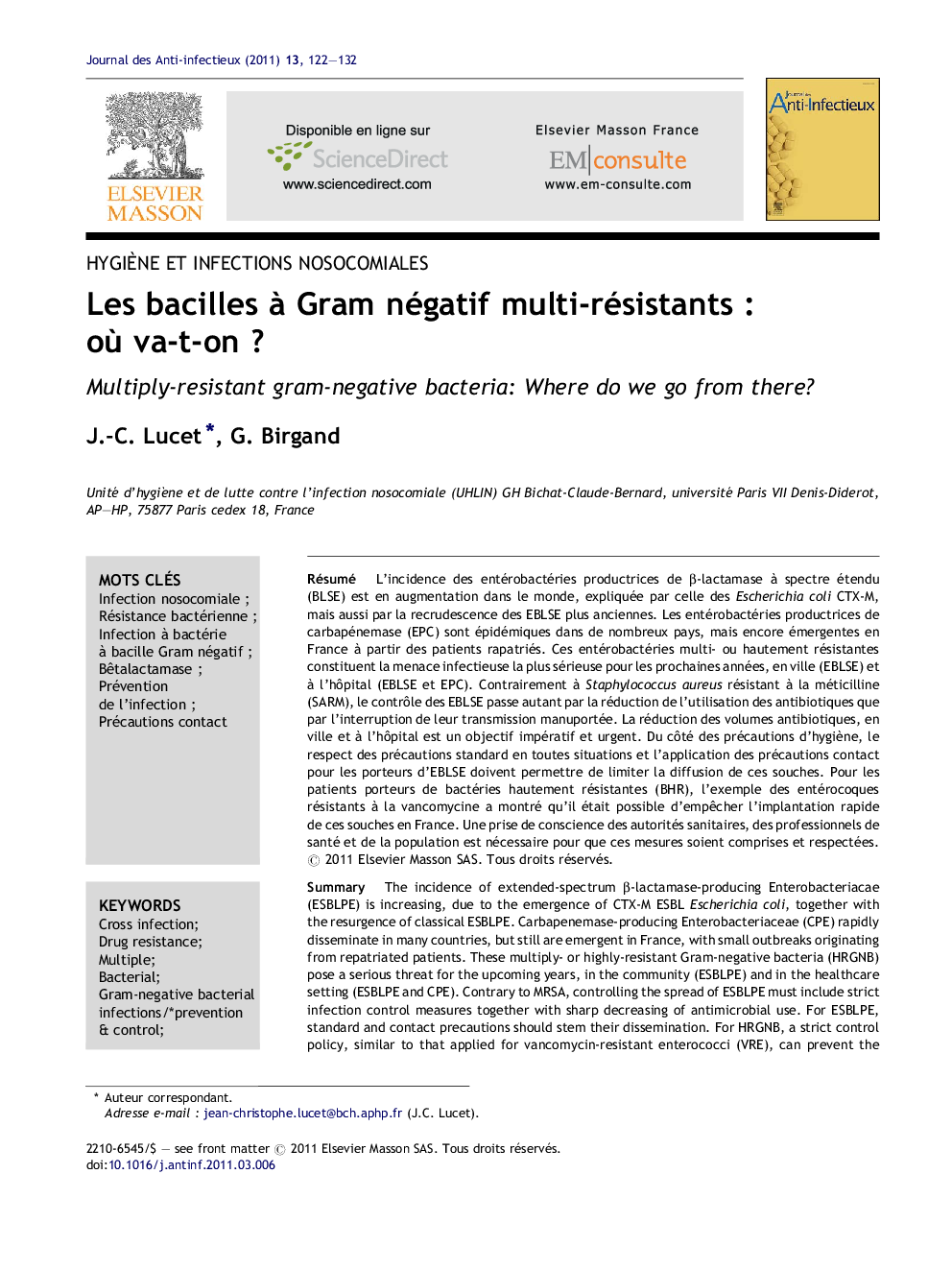| Article ID | Journal | Published Year | Pages | File Type |
|---|---|---|---|---|
| 3405495 | Journal des Anti-infectieux | 2011 | 11 Pages |
Abstract
The incidence of extended-spectrum β-lactamase-producing Enterobacteriacae (ESBLPE) is increasing, due to the emergence of CTX-M ESBL Escherichia coli, together with the resurgence of classical ESBLPE. Carbapenemase-producing Enterobacteriaceae (CPE) rapidly disseminate in many countries, but still are emergent in France, with small outbreaks originating from repatriated patients. These multiply- or highly-resistant Gram-negative bacteria (HRGNB) pose a serious threat for the upcoming years, in the community (ESBLPE) and in the healthcare setting (ESBLPE and CPE). Contrary to MRSA, controlling the spread of ESBLPE must include strict infection control measures together with sharp decreasing of antimicrobial use. For ESBLPE, standard and contact precautions should stem their dissemination. For HRGNB, a strict control policy, similar to that applied for vancomycin-resistant enterococci (VRE), can prevent the establishment of these strains in France. Awareness is urgently needed from healthcare authorities, healthcare professionals, public and medias.
Keywords
Related Topics
Health Sciences
Medicine and Dentistry
Infectious Diseases
Authors
J.-C. Lucet, G. Birgand,
